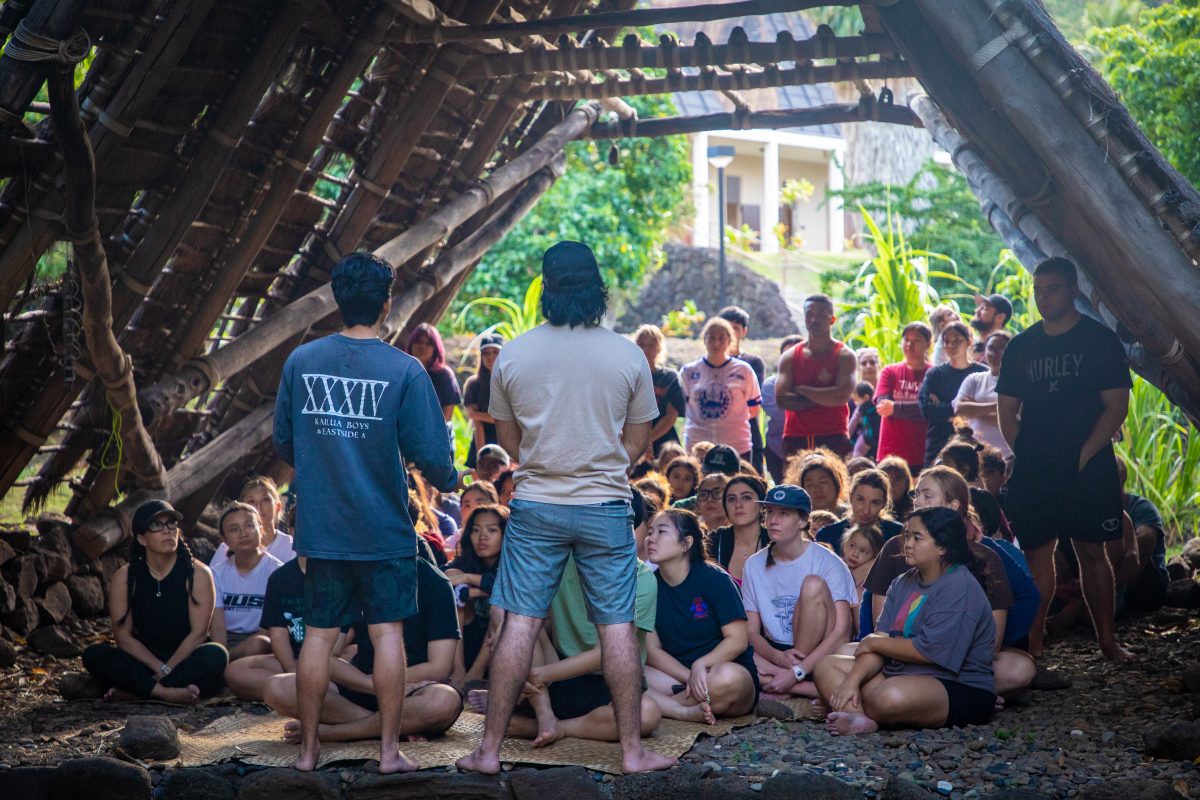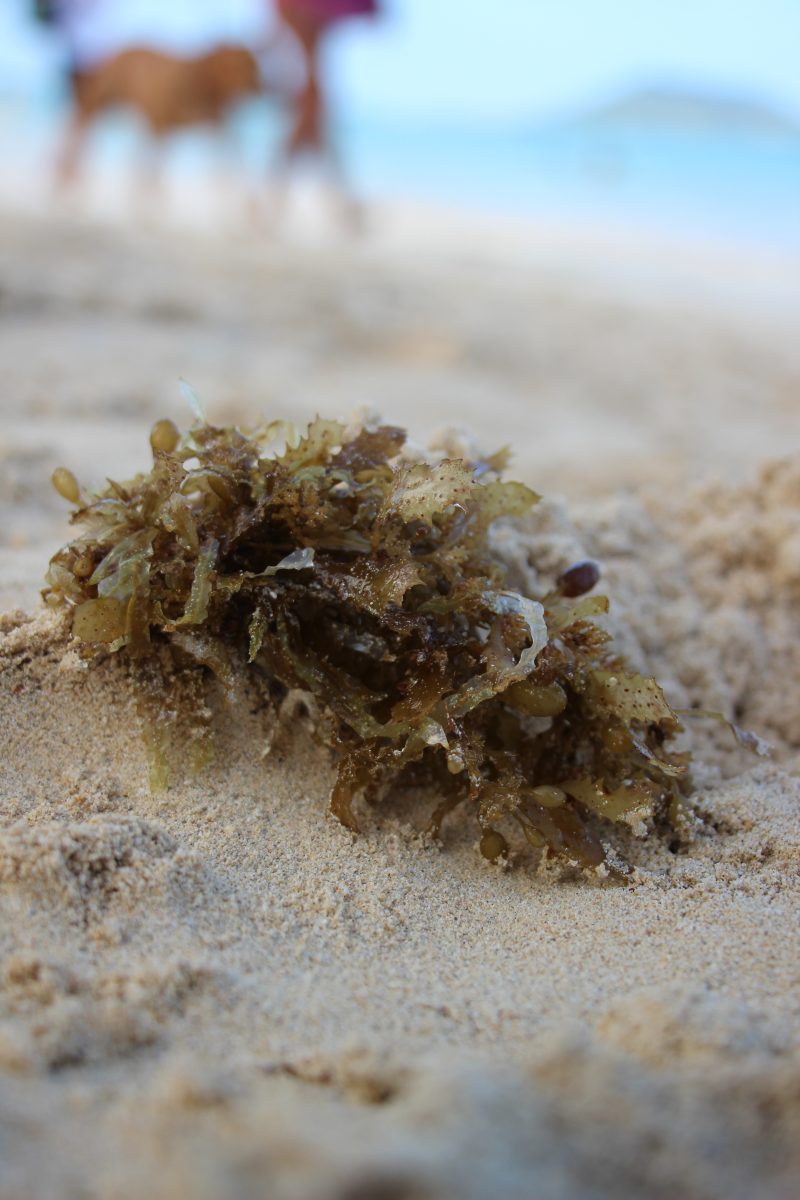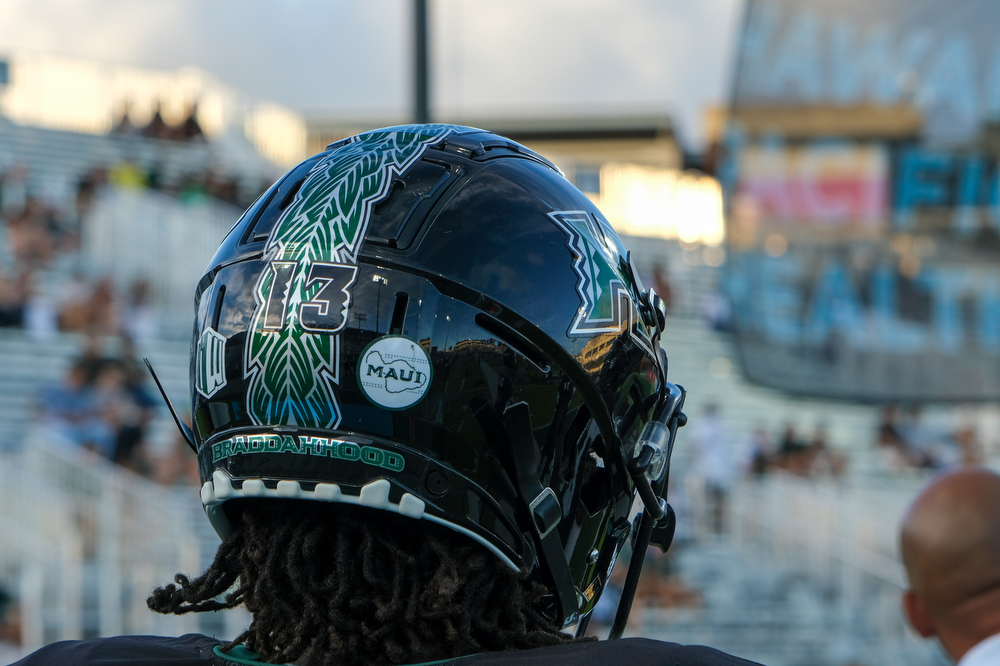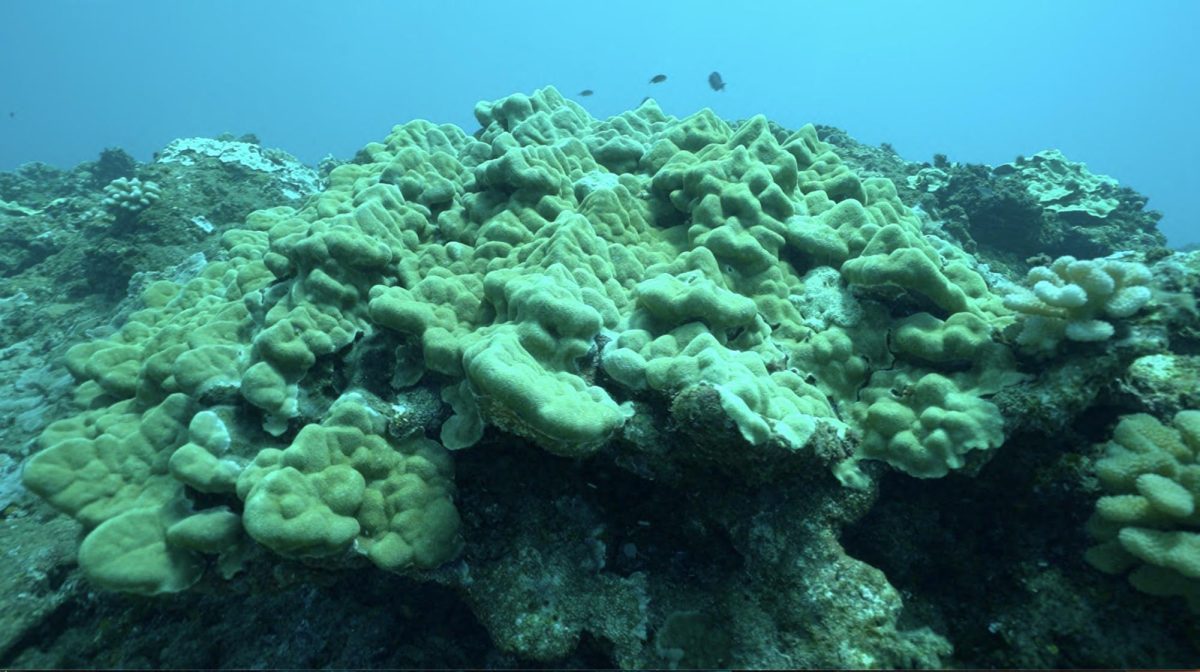This is a dispatch from a research camp in South Africa’s Kruger National Park, “deep in the bush,” as people here would say. Just beyond the electric fence that encircles our bungalows, I am surrounded by lions, elephants, leopards, buffalos and rhinos—the so-called “Big Five” or “charismatic megafauna” that are the great attraction of the African wilderness.
Every day, as soon I drive out of our gate, I encounter herds of zebras, prowling hyenas, grazing impalas, circus troupes of monkeys and other inhabitants of this vast kingdom, who saunter into the road right in front of me. Often they’ll walk alongside if I slow to a stop, close enough to reach out and touch, though that’s strictly forbidden. Mother giraffes and their babies munch on leaves and gaze at me as I gaze at them, or trot off if disturbed by the sound of my engine, their great bodies loping and striding in what looks like majestic slow motion.
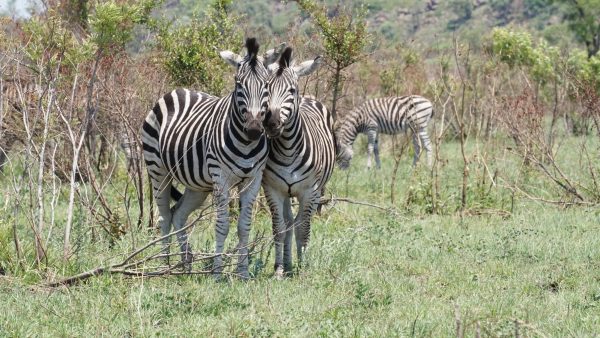
I am here to learn about the lengths to which people here must go to protect these animals, and more specifically, about the recent assassinations of two men who were gunned down while defending the most vulnerable of the park’s residents: the black and white rhinos. In March 2020, a hit squad ambushed a police commander of the investigative task force, Lt.-Col. Leroy Bruwer, on his way to work. The hit was in retaliation for the case he had built against a poaching kingpin. Then last year, Head Ranger Anton Mzimba of the nearby Timbavati Nature Reserve was fatally shot outside his house, in what appears to have been blowback for rooting out the infiltration of the poaching syndicates within his small team.
South Africa is home to 83 percent of the world’s rhino population, which makes this the crucial ground on which to stop the poachers—who are after their valuable horns—from driving these animals into extinction. Poaching rates have dropped since 2018, and conservationists are becoming confident that the most terrible years of the recent crisis are behind us. The struggle, they say, is not at all hopeless. Still, the killings have cut Kruger’s population of the critically endangered black rhino by more than half since 2013, from 415 animals to about 202 in 2020. And the population of white rhinos in the park has crashed 75 percent since 2011, from 10,621 down to just 2,607 in 2020.
The killings of Bruwer and Mzimba punctuated what has been characterized in the press as a nearly 15-year “war” here over poaching, and indeed, South Africa is one of the many fronts around the world in a long history of violent struggle to protect animals and wilderness areas. In the United States, we might think of park rangers as the friends of Smokey the Bear who prevent forest fires, but globally, rangers have been portrayed in the media as the “soldiers” in these conflicts, however inaccurate or unfair that label may actually be.
More than a thousand have been killed in the line of duty over the past 10 years, mostly by poachers, according to the International Ranger Federation, with many more injured. The South African government has not been transparent about the death toll of poachers, but it is certainly higher than for the rangers here: official counts suggest that between 150 and 200 were killed in Kruger alone between 2010 and 2014, but former Mozambican President Joaquim Chissano charged at a 2015 press conference that South African rangers and security forces had killed 476 of his countrymen in the park over that same period.
Wildlife scholars have tracked the escalating bloodshed and the increasingly sophisticated, lethal tactics and equipment of the rangers with alarm, decrying this as “green militarization”—a toxic, counterproductive approach to conservation that violates the basic spirit and principles of the cause. But Head Ranger Cathy Dreyer said the park was just responding to a worsening crisis, “where it was just equipping people to be able to deal with what they were up against, equipping them to protect themselves against force. You know, we teach the guys a lot about minimum force, and when you can shoot and what you can do in defense of your life or not. So it was only preparing people to properly defend their lives.”
She added that the characterization of the conflict as a war was very damaging to the rangers. “It was very much too sensationalized, and so much of it came with a negative connotation towards rangers,” she said. “Because now we became these soldiers, which we’re not. Law enforcement was always a part of our job. Unfortunately it escalated and it became all of our job. But we’re certainly not the soldiers taking part in a war. It was a crisis and we had to react.”
During the worst period from 2014 to 2017, there were thousands of poaching incursions each year into the park, which at 7,523 miles, is the size of the state of Israel, patrolled by only 386 rangers. Sometimes there were as many as five incursions a day, and hundreds of firefights with high-caliber automatic or semiautomatic weapons. In response to the sound of a gunshot, a fixed camera sighting, a break in a perimeter fence or a gruesome discovery of a rhino carcass, rangers and their hounds track the poachers for miles, typically from deep in the night into the day. Once these trackers close in, field rangers drop by helicopter for the armed contacts—all too often traumatizing episodes that have severely strained morale.
The actual confrontations, however, constitute only one part of the anti-poaching struggle, which demands from the rangers a unique mix of skills. It’s a cat-and-mouse game, a combination of counterinsurgency and sprawling investigations into global criminal syndicates. In addition to the kind of military training that special operations units receive for combat, the rangers must also be skilled detectives, intelligence officers and, most especially, consummate experts at tracking and all the arts of “bushcraft” that ensure their survival and resilience in the wild.
The poaching crisis in South Africa began in 2008 with a rapidly increasing demand for rhino horn particularly from China and Vietnam, due to a rise in income levels coupled with the density of readily available rhinos in Kruger. For many years, ancient beliefs have mixed with modern myths about the horn’s powers to reduce fever, treat cancer, serve as a general health tonic, and cure hangovers. But as disposable income has increased in these Asian markets, horn has “become a luxury item and an investment for the rich, coveted for its rarity, held up as an embodiment of status and a means of buying favour,” according to wildlife crime scholars. Researchers have explained the drivers as a complicated mix of motives, “relating to a lack of opportunity, money, status and wealth, as well as conspicuous consumption and a desire to gain respect.” A study in 2019 placed the black-market value of African rhino horn at $26,653 per kilogram, though reports in the press have estimated a kilo to be worth two or three times that value.
The rangers are now feeling more assured that they are overcoming the recent onslaught thanks to a combination of factors. Most important has been a new practice of “dehorning” the rhinos, which leaves only a stub for the poachers to take. Also, the scarcity of rhinos now, as a result of the cumulative toll from these years of poaching, has made them harder to find. Together with the increased efficiency of the rangers, Kruger has become a far more difficult and treacherous hunting ground.
Significant new menaces have arisen, however. The poachers have now shifted their attention to Hluhluwe-iMfolozi Park in KwaZulu-Natal, a region to the south where more than 60 percent of the killings have occurred this year, for a total of 143 by August. Poachers wiped out 244 there last year.
At the same time, the syndicates must now infiltrate Kruger’s rangers and staff in order to operate, which has brought corruption in the park to a boil. “It is impossible for someone to come into Kruger now without some sort of inside link or inside information,” Dreyer told Julian Rademer, a veteran investigative reporter who has been a close observer of rhino poaching since the earliest days of the crisis. His 2012 book, Killing for Profit: Exposing the Illegal Rhino Horn Trade, was the first to fully explain and call attention to the issue.
In the winter of 2023, Rademeyer published Landscape of Fear: Crime, Corruption and Murder in Greater Kruger, a dense and grim report on the thick knot of problems now enveloping the park. About 40 percent of the Kruger’s law enforcement staff are believed to be aiding the poaching networks, Rademeyer announced, a statistic that Dreyer, other senior staff, and recent internal and external reports corroborate. Some say the figure may be as high as 70 percent. In one ranger section, 14 of the 20 on duty were linked to the syndicates.
Landscape of Fear dramatically underscores the degree to which the poaching crisis has been a lens through which all of South Africa’s social, economic and racial injustices have been magnified. Most of Kruger’s staff live in the towns and villages surrounding the park, a 50-kilometer area comprised of 2.9 million, where unemployment was at 46.5 percent by the end of last year. The area is rife with “cash-in-transit” heists (armored car robberies) and other armed robberies, ATM bombings, kidnappings, carjackings, extortion, illegal gold mining, and mob murders at shopping centers and street intersections in broad daylight. The police forces are riddled with corruption. This strip of communities is what Rademeyer has dubbed a “landscape of fear”: “Pervasive poverty, deep-seated inequality, political instability, violent community protests as a result of inadequate services, state inertia and widespread corruption exacerbate this vacuum,” he writes.
Still, despite the grim challenges that Rademeyer accurately documents, perhaps what’s most extraordinary is that when it comes to the state of the wilderness, this place is far from hopeless. To the contrary: six weeks here have transformed my entire view of our planet, from one of utter pessimism about the future survival of our animals and habitat, from certainty about the inevitability of “mass extinction,” to a confident sense of hope.
Americans only see the animals of Kruger in Disney movies and children’s books, or when we go to the zoo. The lions, elephants, zebras and giraffes live in our childhoods, or in the time we spend with kids as parents or grandparents. These creatures live in our imaginations, and maybe sometimes in our dreams. But most Americans will never have a chance to see them in the wild.
Before coming to Africa, I wondered if that meant we must love these animals more than the people who live here do. Perhaps, I thought, the Africans take them for granted. But in fact, having grown up seeing these animals in the bush, South Africans who visit the park seem to have learned to love and admire them far more deeply. The sense of wonder hasn’t dissipated, either. In fact, it seems to grow and keep growing.
I have never met so many people so passionately committed to conservation, so engaged in the hard work required to protect wildlife and sustain it. None of the South Africans I’ve met believe the rhinos, elephants, lions and other great creatures here will go extinct, not on their watch. They simply will not allow it.
This is the most important news that I’ve found—news that you won’t find reported on the front page of the New York Times, or in the thick, rigorous research of Rademeyer’s report. This isn’t to say that the rhinos and other animals aren’t at risk. They very much are. It also isn’t to say that the social and economic problems aren’t profound and severe. But as long as the people here—the rangers and community that supports them—keep up their struggle, these animals will continue to survive.

